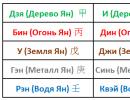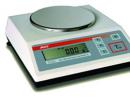Theory of the structure of organic compounds: homology and isomerism. Inorganic compounds are isomers What is characteristic of organics besides isomerism chemistry
Subject and role of organic chemistry. Theory of the chemical structure of organic compounds A.M. Butlerov and its significance.
Organic chemistry, a science that studies the compounds of carbon with other elements (organic compounds), as well as the laws of their transformations.
The diversity and enormous number of organic compounds determines the importance of organic chemistry as the largest branch of modern chemistry. The world around us is built mainly from organic compounds; food, fuel, clothing, medicines, paints, detergents, explosives, materials without which it is impossible to create transport, print books, penetrate into space, etc. - all this consists of organic compounds. Organic compounds play a vital role in life processes. Organic chemistry studies not only compounds obtained from plant and animal organisms (so-called natural substances), but mainly compounds created artificially using laboratory or industrial organic synthesis.
Basic principles of the theory of chemical structure of A.M. Butlerov
1. Atoms in molecules are connected to each other in a certain sequence according to their valencies. The sequence of interatomic bonds in a molecule is called its chemical structure and is reflected by one structural formula (structure formula).
2. The chemical structure can be determined using chemical methods. (Modern physical methods are also currently used).
3.The properties of substances depend on their chemical structure.
4. By the properties of a given substance, you can determine the structure of its molecule, and by the structure of the molecule, you can predict the properties.
5. Atoms and groups of atoms in a molecule have a mutual influence on each other.
Butlerov's theory was the scientific foundation of organic chemistry and contributed to its rapid development. Based on the provisions of the theory, A.M. Butlerov explained the phenomenon of isomerism, predicted the existence of various isomers and obtained some of them for the first time.
The phenomenon of isomerism of organic compounds, its types.
The basis of isomerism, as shown by A.M. Butlerov, lies the difference in the structure of molecules consisting of the same set of atoms. Thus, isomerism- this is the phenomenon of the existence of compounds that have the same qualitative and quantitative composition, but different structures and, therefore, different properties.
For example, when a molecule contains 4 carbon atoms and 10 hydrogen atoms, the existence of 2 isomeric compounds is possible:
Depending on the nature of the differences in the structure of isomers, structural and spatial isomerism are distinguished.
Structural isomers- compounds of the same qualitative and quantitative composition, differing in the order of bonding of atoms, i.e. chemical structure.
For example, the composition C5H12 corresponds to 3 structural isomers:

Spatial isomers (stereoisomers) with the same composition and the same chemical structure, they differ in the spatial arrangement of atoms in the molecule.
Spatial isomers are optical and cis-trans isomers. The molecules of such isomers are spatially incompatible. 
Electronic representations in organic chemistry. Structure of the carbon atom. Hybridization of orbitals (valence states of the carbon atom). Covalent bond and its types (simple, or δ- and multiple).
The application of the electronic theory of atomic structure and chemical bonding in organic chemistry was one of the most important stages in the development of the theory of the structure of organic compounds. The concept of chemical structure as a sequence of bonds between atoms (A.M. Butlerov) was supplemented by electronic theory with ideas about electronic and spatial structure and their influence on the properties of organic compounds. It is these ideas that make it possible to understand the ways of transmitting the mutual influence of atoms in molecules (electronic and spatial effects) and the behavior of molecules in chemical reactions.
According to modern concepts, the properties of organic compounds are determined by:
· nature and electronic structure of atoms;
· type of atomic orbitals and the nature of their interaction;
· type of chemical bonds;
· chemical, electronic and spatial structure of molecules.
The carbon atom consists from the nucleus, which has a positive charge of +6 (since it contains six protons), and the electron shell, which contains six electrons located on two energy levels (layers). Ground state electronic configuration 1s 2 2s 2 2p 2 .

In the normal (unexcited) state, the carbon atom has two unpaired 2 r 2 electrons. In an excited state (when energy is absorbed) one of 2 s 2 electrons can go to free r-orbital. Then four unpaired electrons appear in the carbon atom:
Hybridization orbitals is the process of aligning them in shape and energy. The number of hybrid orbitals is equal to the number of original orbitals. Compared to them, hybrid orbitals are more elongated in space, which ensures their more complete overlap with the orbitals of neighboring atoms.
sp- Hybridization
– this is mixing (alignment in shape and energy) of one s- and one r-orbitals to form two hybrid sp-orbitals. sp-The orbitals are located on the same line (at an angle of 180°) and directed in opposite directions from the nucleus of the carbon atom. Two r-orbitals remain unhybridized. They are placed mutually perpendicular to the directions of the connections. 
There are three types of covalent chemical bonds, differing in the mechanism of formation:
1. Simple covalent bond. For its formation, each atom provides one unpaired electron. When a simple covalent bond is formed, the formal charges of the atoms remain unchanged.
If the atoms forming a simple covalent bond are the same, then the true charges of the atoms in the molecule are also the same, since the atoms forming a bond equally own a shared electron pair, such a bond is called non-polar covalent bond.
If atoms different, then the degree of possession of a shared pair of electrons is determined by the difference in the electronegativity of the atoms. An atom with greater electronegativity attracts a pair of bonding electrons more strongly toward itself, and its true charge becomes negative. An atom with lower electronegativity acquires the same positive charge. This covalent bond is called polar.
2. Donor-acceptor bond. To form this type of covalent bond, both electrons are provided by one of the atoms - the donor. The second of the atoms involved in the formation of a bond is called an acceptor. In the resulting molecule, the formal charge of the donor increases by one, and the formal charge of the acceptor decreases by one.
3. Semipolar connection. This type of covalent bond is formed between an atom with a lone pair of electrons (nitrogen, phosphorus, sulfur, halogens, etc.) and an atom with two unpaired electrons (oxygen, sulfur). The formation of a semipolar bond occurs in two stages:
· Oxidation (transfer of one electron);
· Socialization of unpaired electrons.
σ bond (sigma bond)- a covalent bond formed by overlapping electron clouds “along the center line.” Characterized by axial symmetry. A bond formed when hybrid orbitals overlap along a line connecting the nuclei of an atom.

Classification of organic compounds. Functional groups and the most important classes of organic compounds. Heterofunctional compounds. Qualitative functional analysis (chemical identification of classes of organic compounds).

Acyclic compounds (fatty or aliphatic) – compounds whose molecules contain an open (not closed in a ring) straight or branched carbon chain with single or multiple bonds. Acyclic compounds are divided into two main groups:
saturated (saturated) hydrocarbons (alkanes), in which all carbon atoms are connected to each other only by simple bonds;
unsaturated (unsaturated) hydrocarbons (alkenes, alkynes and alkadienes), in which between carbon atoms, in addition to single simple bonds, there are also double and triple bonds.
Cyclic compounds, in turn, are divided into two large groups:
- carbocyclic compounds – compounds whose cycles consist only of carbon atoms; Carbocyclic compounds are divided into alicyclic– saturated (cycloparaffins) and aromatic;
- heterocyclic compounds – compounds whose cycles consist not only of carbon atoms, but atoms of other elements: nitrogen, oxygen, sulfur, etc.
"Other Classes of Organic Compounds" include the following: alcohols, aldehydes, carboxylic acids, esters, fats, carbohydrates, amines, amino acids, proteins, nucleic acids.
Most organic substances involved in metabolic processes belong to heterofunctional compounds, i.e. having several different functional groups in its structure. The most common heterofunctional compounds are amino alcohols, amino acids, hydroxy acids, and oxoacids. The chemical properties of heterofunctional compounds cannot be considered as the sum of properties due to the presence of each functional group. Since functional groups influence each other, heterofunctional compounds also develop specific chemical properties.
Qualitative analysis aims to detect certain substances or their components in the analyzed object. Detection is carried out by identification substances, that is, establishing the identity (sameness) of the AS of the analyzed object and the known AS of the analyzed substances under the conditions of the applied analysis method. To do this, this method preliminarily examines reference substances in which the presence of analyte substances is known.
Widely used in organic chemistry isomerism, the essence of which is that there are several different substances that have the same molecular formula, but have different structures and, as a result, different chemical and physical properties. In this case, knowing only the molecular formula does not provide a complete picture of the properties of the substance. Such an idea can be given to us by knowledge of the structural (graphical) formula of a substance.
There are structural, positional, geometric (cis-, trans-) and optical types of isomerism of organic compounds.
Structural isomerism of organic compounds
A. Multiple connections
B. Deputies 
IN. Functional groups 

Geometric isomerism of organic compounds
In this case, the order of connection of atoms in isomeric molecules is the same, but their spatial arrangement is different. Such isomers are called spatial or stereoisomers. In turn, stereoisomers in which the stereogenic group is a multiple bond or small rings are called geometric.
The existence of geometric isomers is possible in the presence of functional groups at a multiple bond. And the difference between isomers lies in the spatial arrangement of functional groups relative to the plane of the double bond.
The names of such isomers are constructed using cis -, trans- designations:
In the cis isomer two identical substituents on different carbon atoms connected by a double bond are on the same side of the double bond.
In the trans isomer identical substituents lie on opposite sides of the double bond.

In the case where, in a multiple bond, all substituents are different E-, Z- designations (« E" from entgegen - on the contrary, " Z"from zusammen - together). To determine the configuration type ( E- or, Z-) it is necessary to establish the seniority of deputies, i.e. comparison of their atomic numbers.
Z- an isomer has a configuration in which two senior substituents are located on one side of the double bond, and E- configuration is an isomer in which two senior substituents are located on opposite sides of the double bond.
For example, let us determine the type of configuration of the 1-bromo-1-chloro-2-nitroethylene isomers presented in the figure. Ethylene isomers have the following substituents: H (atomic number - 1), Br (atomic number - 35), N (atomic number - 7), Cl (atomic number - 17).

A) at the first carbon atom the senior substituent is Br (35), at the second carbon atom it is N (7). These substituents are on opposite sides of the multiple bond. Therefore this E– isomer.
b) at the first carbon atom the senior substituent is Cl (17), at the second carbon atom it is Br (35). These substituents are on one side of the multiple bond. Therefore this Z– isomer.
In the case when the substituents directly connected to the unsaturated carbon atoms (“first layer”) are the same, then the substituents of the “second layer”, “third layer”, etc. are compared.

In the example presented, all the substituents of the “first layer” are the same - this is C. Therefore, it is necessary to consider the “second layer”. In this layer, the first carbon atom connected by a double bond has a senior substituent - Cl, and the second carbon atom has a substituent - C. Two senior substituents are located on one side of the double bond, which means the isomer has 2 Z configuration
Optical isomerism of organic compounds
Back in the early 19th century, it was discovered that some substances, when polarized light is passed through them, deflect the plane of polarization by a certain angle. In addition, there are two compounds (isomers) that deviate the plane of polarization by angles equal in magnitude, but different in sign (left-handed and right-handed). Such substances were called optical isomers(antipodes or enantiomers).
A mixture containing equal amounts of left- and right-handed isomers is optically inactive and is called racemic mixture.
Optical activity is characteristic of substances that contain one or more asymmetric carbon atoms (i.e., carbon bonded to four different substituents), for example:

The two optical isomers differ from each other as the object and its mirror image. When combined, they do not match like the left and right hands when placed on top of each other. Such molecules are called chiral(Greek “cheiros” - hand). If, when superimposed, a molecule coincides with its mirror image, then it achiral.

In organic molecules, in addition to carbon bonded to four different substituents, compounds containing atoms such as silicon, nitrogen and phosphorus, and also having a stereogenic axis or plane, can have chirality.
On a plane, optical isomers are depicted using Fischer projection formulas

Rules for constructing Fisher formulas:
- The vertical dotted line shows the projections of connections directed away from the observer
- The horizontal line shows the projections of connections directed towards the observer
- The center of intersection of the vertical and horizontal lines corresponds to the chiral center, which is most often played by an asymmetric carbon atom. In this case, the symbol of the most asymmetric carbon atom C is not depicted.
- If the asymmetric center is not carbon, but another atom, then its symbol must be drawn at the center of the intersection of the lines.
- Substituents are depicted at the ends of vertical and horizontal lines, strictly observing their spatial arrangement.
Organic substances are capable of forming isomers. These are compounds with the same number of atoms, but different in structure or position in space. The structure and position of the molecule influence the physical and chemical properties of organic compounds.
Classification and nomenclature
An explanation of isomerism was obtained in the second half of the 19th century thanks to the theory of the chemical structure of organic substances by Alexander Butlerov. The chemist showed that the properties of substances depend not only on the number of atoms, but also on their position in the molecule and space.

Rice. 1. Alexander Butlerov.
In this regard, there are two types of isomerism:
- structural- is associated with the position of atoms or groups of atoms in a molecule of a substance, as well as the position of multiple bonds;
- spatial- reflects the position of the molecule in space relative to the conventional plane.
The number of isomers of one substance depends on the number of carbon atoms in the molecule. The longer the chain, the more options for isomerism.
Structural
The position of the substituent, double bonds, and functional group in the molecule can change. In this regard, the following types of structural isomerism are distinguished:
- carbon skeleton;
- provisions.
Isomerism of the carbon skeleton involves the transfer of the methyl group -CH 2 to any carbon atom of the molecule. For example, one CH 2 group can detach from pentane (CH 3 -CH 2 -CH 2 -CH 2 -CH 3) and attach to a second atom, forming 2-methylbutane.
Positional isomerism is of three types:
- multiple bonds- isomers are formed due to the movement of multiple bonds in the molecule: CH 2 =C=CH-CH 3 (butadiene-1,2) and CH 2 =CH-CH=CH 2 (butadiene-1,3);
- functional group- change in the position of the functional radical: CH 3 -CH 2 -CH 2 -CH 2 OH (butanol-1) and CH 3 -CH 2 -CHOH-CH 3 (butanol-2);
- deputy- addition of a radical to another carbon atom in the molecule: CH 3 -CHCl-CH 2 -CH 3 (2-chlorobutane) and CH 2 Cl-CH 2 -CH 2 -CH 3 (1-chlorobutane).
Separately, interclass isomerism is distinguished, which essentially depends on the position of the functional group. In some cases, when an atom is transferred, for example, from the end to the middle of a molecule, a substance of a different class is formed. At the same time, the molecular formula of the substances remains the same. For example, CH 3 -CH 2 -OH is ethanol, and CH 3 -O-CH 3 is dimethyl ether. The molecular formula of both substances is C 2 H 6 O. Another example: propylene and cyclopropane with the formula C 3 H 6.

Rice. 2. Structural formulas of propylene and cyclopropane.
The name of structural isomers consists of the names of the radicals and the carbon chain. At the beginning of the name there are numbers indicating the number of the atom to which the radical is attached (counting starts from the branched end). Numbers may also be placed at the end of the name, indicating the number of the atom with a double or triple bond.
Spatial
This type is classified into two groups:
- optical or mirror isomerism;
- geometric isomerism.
The essence of optical isomerism is the mirror reflection of molecules. The isomers seem to reflect each other.
Geometric isomerism is divided into two types:
- cis isomerism- radicals are located on one side of the conventional plane dividing the molecule in half;
- trans isomerism- radicals lie on different sides of the conventional plane.

Rice. 3. Optical and geometric isomerism.
Isomers of spatial isomerism are called stereoisomers or spatial isomers. Mirror molecules are called enantiomers. If the molecules do not reflect each other, they are called diastereomers or geometric isomers.
What have we learned?
Isomerism is the phenomenon of the occurrence of isomers. These are substances that are identical in composition, but different in structure and position in space. There are two types - structural and spatial isomerism. Structural isomerism reflects the structure of molecules. It can be manifested by the carbon skeleton, the position of the functional group, multiple bonds, and substituent. Interclass structural isomerism is also distinguished. Spatial isomerism can be optical or geometric. It is due to the peculiarities of the position of the molecule in space.
Test on the topic
Evaluation of the report
Average rating: 4.6. Total ratings received: 298.
There are two types of isomerism: structural and spatial (stereoisomerism). Structural isomers differ from each other by the order of bonds of atoms in the molecule, stereo-isomers - by the arrangement of atoms in space with the same order of bonds between them.
Structural isomerism: carbon skeleton isomerism, positional isomerism, isomerism of various classes of organic compounds (interclass isomerism).
Structural isomerism
Isomerism of the carbon skeleton
Positional isomerism is due to different positions of the multiple bond, substituent, and functional group with the same carbon skeleton of the molecule: 
Spatial isomerism Spatial isomerism is divided into two types: geometric and optical.
Geometric isomerism is characteristic of compounds containing double bonds and cyclic compounds. Since free rotation of atoms around a double bond or in a ring is impossible, the substituents can be located either on the same side of the plane of the double bond or ring (cis position) or on opposite sides (trans position). 
Optical isomerism occurs when a molecule is incompatible with its image in a mirror. This is possible when the carbon atom in the molecule has four different substituents. This atom is called asymmetric. 

CHIRALITY, the property of an object to be incompatible with its image in an ideal plane mirror.
Various spatial structures that arise due to rotation around simple bonds without violating the integrity of the molecule (without breaking chemical bonds) are called CONFORMATIONS.
8. Structure of alkanes. Sp3 is the state of carbon. Characteristics of s-s and s-n connections. The principle of free rotation. Conformation. Methods of representation and nomenclature. Physical properties of alkanes.
All carbon atoms in alkane molecules are in the state sp 3
-hybridization, the angle between the C-C bonds is 109°28", therefore the molecules of normal alkanes with a large number of carbon atoms have a zigzag structure (zigzag). The length of the C-C bond in saturated hydrocarbons is 0.154 nm 
The C-C bond is covalent non-polar. The C-H bond is covalent and weakly polar, since C and H are close in electronegativity.
Physical properties
Under normal conditions, the first four members of the homologous series of alkanes are gases, C 5 -C 17 are liquids, and starting from C 18 are solids. The melting and boiling points of alkanes of their density increase with increasing molecular weight. All alkanes are lighter than water, insoluble in it, but soluble in non-polar solvents (for example, benzene) and are themselves good solvents.
Melting and boiling points decrease from less branched to more branched.
Gaseous alkanes burn with a colorless or pale blue flame and release large amounts of heat.
Rotation of atoms around the s-bond will not lead to its breaking. As a result of intramolecular rotation along C–C s-bonds, alkane molecules, starting with ethane C 2 H 6, can take on different geometric shapes. Various spatial forms of a molecule that transform into each other by rotating around C–C s-bonds are called conformations or rotary isomers(conformers). Rotational isomers of a molecule are its energetically unequal states. Their interconversion occurs quickly and constantly as a result of thermal movement. Therefore, rotary isomers cannot be isolated in individual form, but their existence has been proven by physical methods.
alkanes . methane, ethane, propane, butane –an
9. Hydrocarbons. Classification. Saturated hydrocarbons of the methane series. Homologous series. Nomenclature. Isomerism. Radicals. Natural springs. Fischer-Tropsch synthesis. Methods of preparation (from alkenes, carboxylic acids, halogen derivatives, by the Wurtz reaction)
The general (generic) name of saturated hydrocarbons is alkanes . The names of the first four members of the methane homologous series are trivial: methane, ethane, propane, butane . Starting from the fifth, the names are derived from Greek numerals with the addition of a suffix –an
Radicals (hydrocarbon radicals) also have their own nomenclature. Monovalent radicals are called alkyls and is designated by the letter R or Alk. Their general formula is C n H 2n+ 1 . The names of the radicals are made up of the names of the corresponding hydrocarbons by replacing the suffix -an to suffix -il(methane - methyl, ethane - ethyl, propane - propyl, etc.). Divalent radicals are named by replacing the suffix -an on -iliden(exception is the methylene radical = CH 2). Trivalent radicals have the suffix -ilidin
Isomerism. Alkanes are characterized by structural isomerism. If an alkane molecule contains more than three carbon atoms, then the order of their connection may be different. One of the isomers of butane ( n-butane) contains an unbranched carbon chain, and the other, isobutane, contains a branched one (isostructure).
The most important source of alkanes in nature is natural gas, mineral hydrocarbon raw materials - oil and associated petroleum gases.
Alkanes can be prepared by the Wurtz reaction, which involves the action of metallic sodium on monohalogen derivatives of hydrocarbons. 2CH 3 –CH 2 Br (ethyl bromide) + 2Na ––> CH 3 –CH 2 –CH 2 –CH 3 (butane) + 2NaBr
From alkenes
C n H 2n + H 2 → C n H 2n+2
Fischer-Tropsch synthesis
nCO + (2n+1)H 2 → C n H 2n+2 + nH 2 O
The table shows that these hydrocarbons differ from each other in the number of groups - CH2-. Such a series of similar structures, having similar chemical properties and differing from each other in the number of these groups is called a homologous series. And the substances that make it up are called homologues.
|
Name |
|
|
isobutane |
|
|
isopentane |
|
|
neopentane |
|
Isomers, isomerism
Isomers- these are substances that have the same qualitative and quantitative composition, but different structures and, therefore, different properties
The phenomenon of the existence of isomers is called isomerism
For example, a substance with the composition C 4 H 10 has two isomeric compounds.
The physical properties of butane and isobutane are different: isobutane has lower melting and boiling points than n.butane.
 Ball-and-stick model of the butane molecule
Ball-and-stick model of the butane molecule  Ball-and-stick model of the isobutane molecule
Ball-and-stick model of the isobutane molecule
The chemical properties of these isomers differ slightly, because they have the same qualitative composition and the nature of the bonds between the atoms in the molecule.
Another definition of isomers can be given as follows:
Isomers – substances that have the same molecular but different structural formulas.
Types of isomerism

Depending on the nature of the differences in the structure of the isomers, they are distinguished structural And spatial isomerism.
Structural isomers- compounds of the same qualitative and quantitative composition, differing in the order of bonding of atoms, i.e. chemical structure.
|
Structural isomerism is divided into: |
||
|
1.Isomerism of the carbon skeleton |
2.Positional isomerism (multiple bond, functional group, substituent) |
3.Interclass isomerism CH 3 -CH 2 -NO 2 nitroethane HOOC-CH 2 -NH 2 aminoacetic acid (glycine) |
|
Position isomerism |
||
|
multiple connection CH 2 = CH-CH = CH 2 CH 3 -CH= C= CH 2 |
functional group CH 3 -CHON -CH 3 CH 2 OH -CH 2 -CH 3 |
Deputy CH 3 -CHCI -CH 3 CH 2 CI -CH 2 -CH 3 |
Structural isomerism
|
|
Isomerism of the position of a multiple (double) bond: Butene-1 and butene-2 |
|
Carbon skeleton isomerism: Cyclobutane and methylcyclopropane |
|
|
Interclass isomerism: Butene and cyclobutane |
Spatial isomers (stereoisomers) with the same composition and the same chemical structure, they differ in the spatial arrangement of atoms in the molecule
|
Spatial isomerism is divided into: |
|
|
|
Characteristic of substances containing double bonds or cyclic ones. |
Optical isomers are also called mirror or chiral (like left and right hand)







